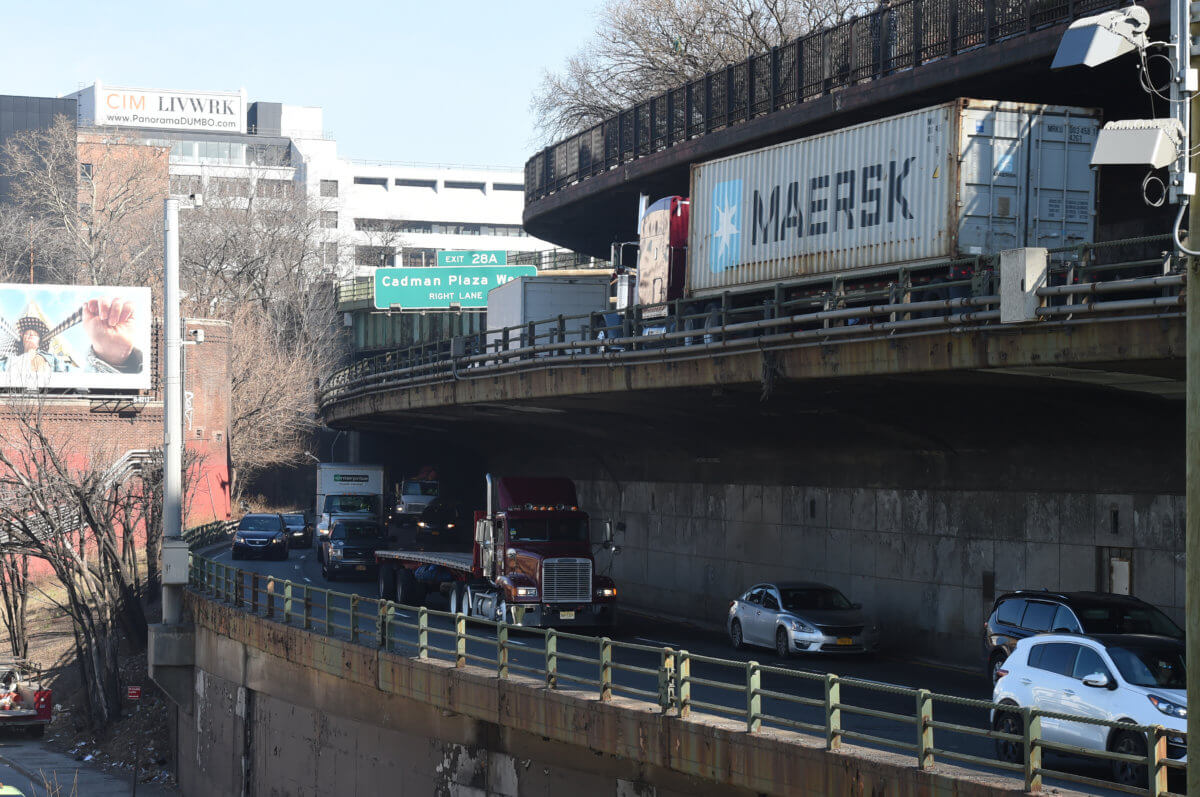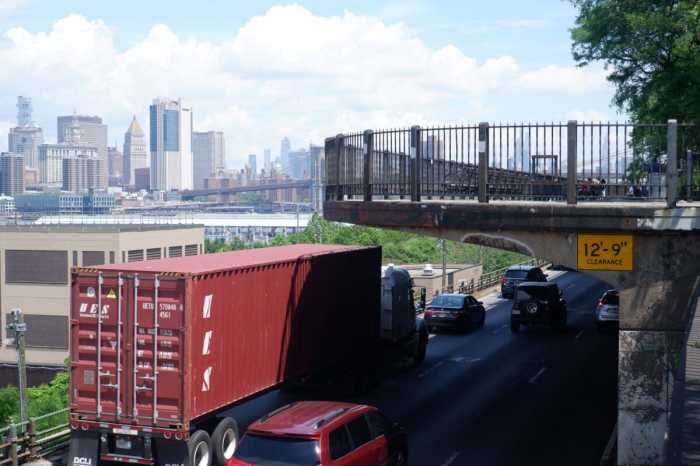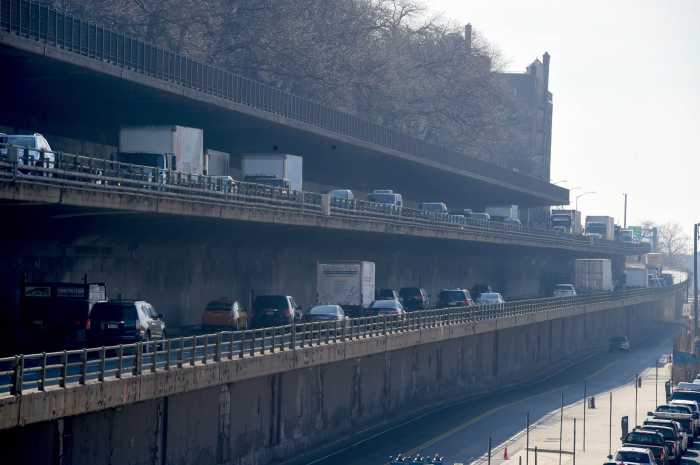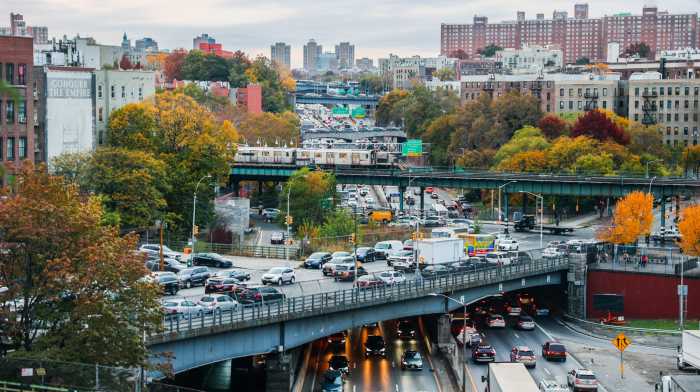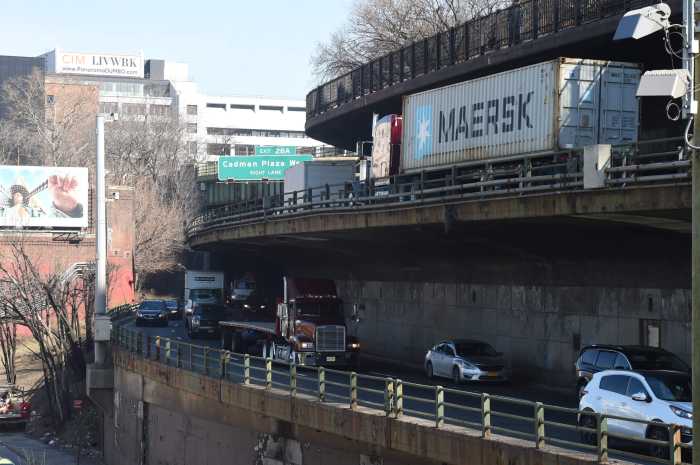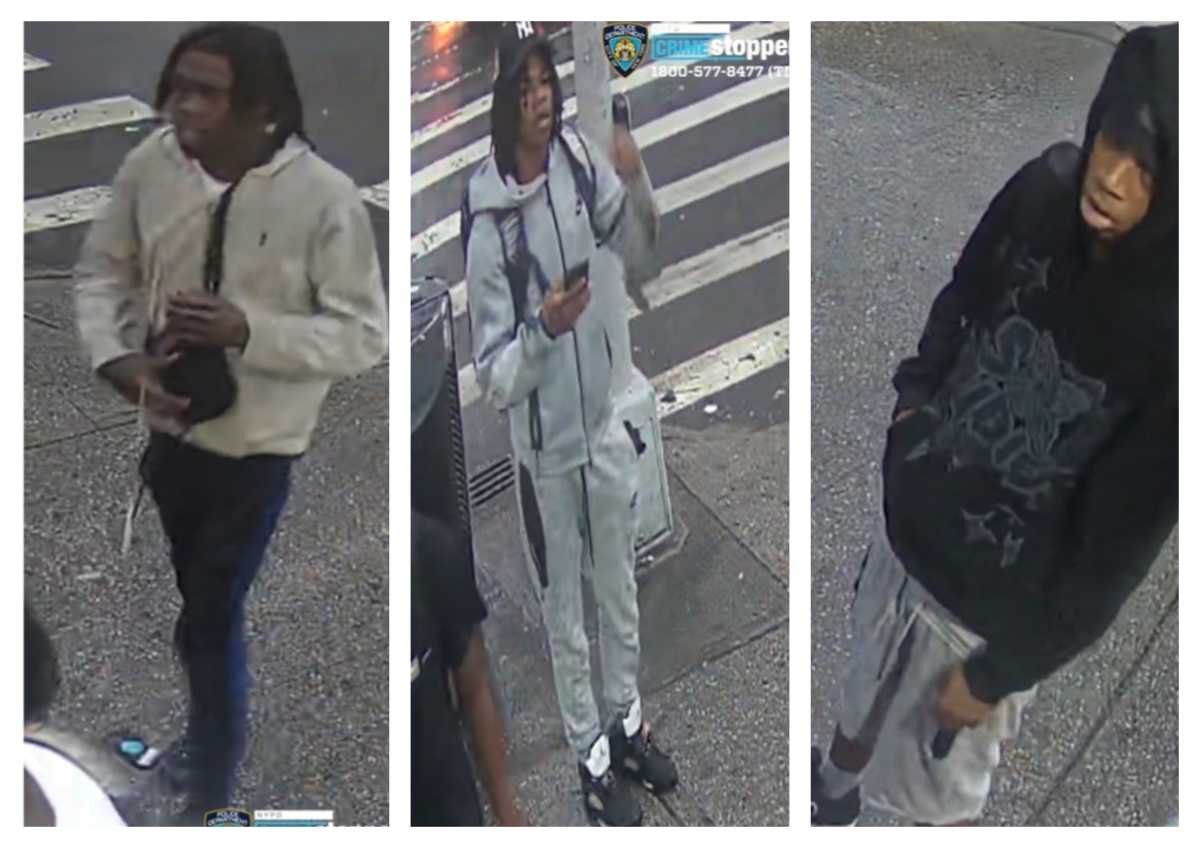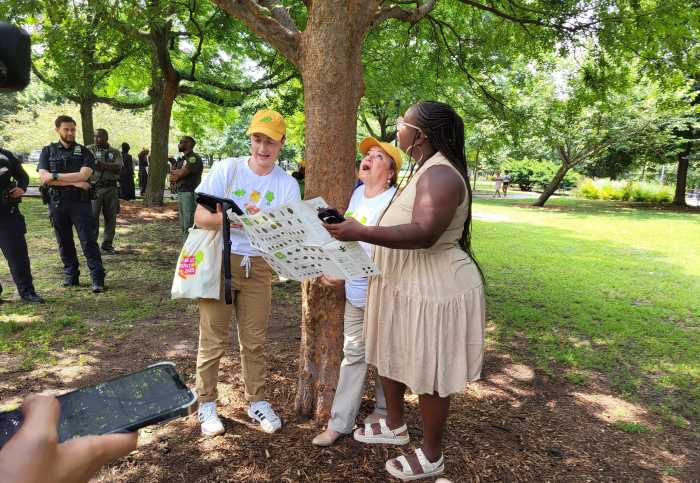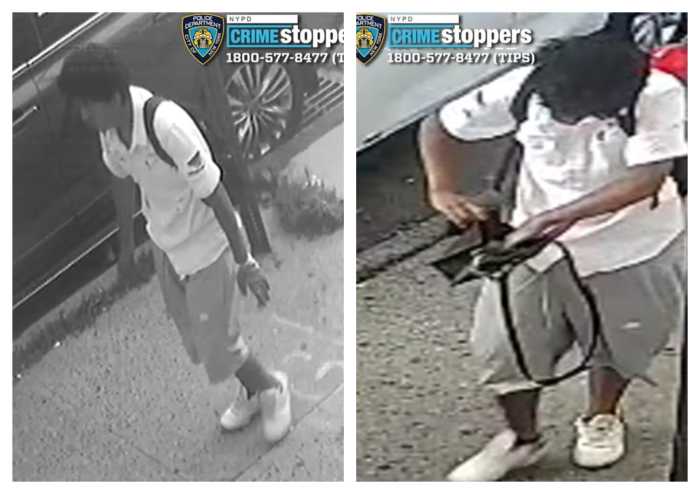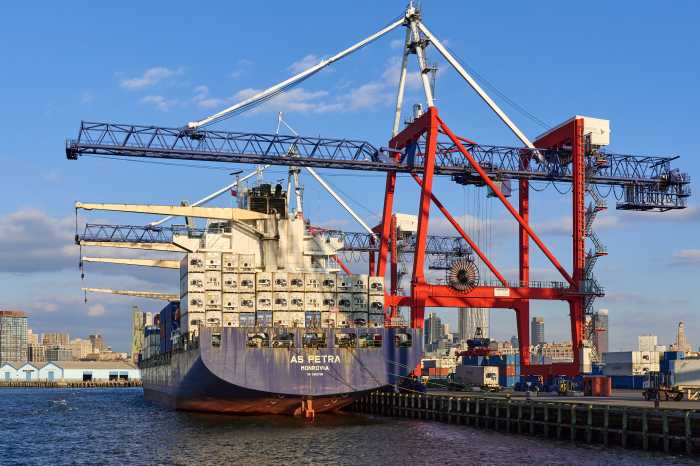The city is slamming the brakes on its plan to “re-envision” the crumbling triple cantilever section of the Brooklyn-Queens Expressway to allow for a “comprehensive” traffic study of the optimal number of lanes on the highway.
In December, the Adams administration unveiled its proposals to re-envision the 1.5-mile city-owned section of the BQE in Brooklyn, particularly the much-maligned triple cantilever section running through Brooklyn Heights. In order to be eligible for federal infrastructure grants, the administration aimed to fast-track the visioning process and start environmental reviews by this spring.
But the plan sustained significant pushback from activists and local elected officials for restoring a third travel lane in each direction on the 70-year-old highway, after former Mayor Bill de Blasio narrowed the stretch to two lanes ostensibly to extend its lifespan. The Department of Transportation had contended the third lane would not be for general automobile use, but instead as a high-occupancy vehicle lane, bus lane, or a shoulder.
Nonetheless, in a familiar move on Friday, DOT announced that the project would again be delayed, with environmental review now expected this autumn so the agency can conduct a study of lane configuration on the cantilever, assessing the traffic and environmental impacts of two-versus-three lanes on the stretch.
“We are committed to environmental justice, public health, and reducing the harmful effects of the BQE by building as narrow a structure as possible along BQE Central that also meets federal safety regulations,” said DOT Commissioner Ydanis Rodriguez in a statement. “That’s why DOT will be undertaking a comprehensive traffic study on both two- and three-lane configurations for the city-owned section and reviewing additional feedback in close coordination with state, federal, and community partners as we continue with scheduled, interim repairs to ensure the cantilever remains safe.”
The cantilever could be unsafe to use as early as 2026 barring major repair or replacement work, according to an “expert panel” convened by de Blasio. The Adams administration’s plans had called for either partial or total replacement of the cantilever’s retaining wall and to cover the unsightly expressway’s stretch through Brooklyn Heights with greenspace, allowing connections between the Brooklyn Heights Promenade and Brooklyn Bridge Park.
DOT has also had to stall the implementation of weight sensors to catch and fine the owners of overweight trucks using the cantilever: the sensors are in place, DOT previously told amNewYork Metro, but can’t be turned on until the feds deem them to meet “calibration standards” and work as advertised. Trucks weighing more than 80,000 pounds are barred from using the highway, but de Blasio’s expert panel estimated more than 11% of rigs using the BQE were hauling loads in excess of that, with some carrying as much as 170,000 pounds.
Throughout the public engagement process, DOT has weathered criticism from local residents and elected officials, who argue the city’s plans should aim to reduce traffic on the BQE. To be eligible for federal funding, the highway must effectively sport three lanes, says DOT: two 12-foot travel lanes, one 10-foot shoulder lane on the right, and one 4-foot shoulder lane on the left.
But advocates, electeds, local civic groups, and even top business leaders have called for the city to tear down the BQE entirely, arguing the Robert Moses-era highway had divided communities and choked neighborhoods with air pollution and traffic.
“The BHA and the Coalition for the BQE Transformation (BQET) have been consistent in our position that the BQE must not expand beyond its current footprint, and in fact should be as small as possible (if not entirely eliminated) so that every adjacent community can have the opportunity to breath clean air and reap the positive health, safety, and climate benefits that would come from a smaller highway,” said Lara Birnback, executive director of the century-old Brooklyn Heights Association, in an email.
Local electeds have also decried the fact that the rest of the highway — which is owned by the state and stretches from Sunset Park, Brooklyn to Astoria, Queens — is not being considered for a re-envisioning, after the state declared it had no such plans.
“The BQE is a relic of an era of racist highway planning. We have a once-in-a-generation opportunity to reconnect communities the BQE tore apart, and we can’t waste this chance,” said Kathy Park Price, the Brooklyn Organizer at Transportation Alternatives, in a statement. “Now is the time to build infrastructure that meets the needs of all New Yorkers — not rebuild highways.



